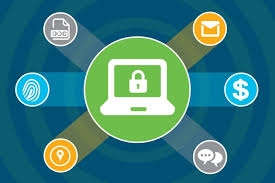Containerized Data Center: Enhancing Data Security and Compliance
Containerized data centers are revolutionizing the IT infrastructure landscape, offering a flexible, scalable, and efficient solution for modern data management needs. These modular data centers are essentially self-contained units, often housed in standard shipping containers, which can be easily transported and deployed to various locations.This innovative approach to data center deployment provides numerous advantages over traditional brick-and-mortar facilities, making it an attractive option for businesses seeking to optimize their IT operations.
One of the primary benefits of containerized data centers is their portability. Unlike conventional data centers, which require extensive construction and can take years to build containerized data centers can be quickly transported and set up wherever needed.This makes them ideal for remote locations, disaster recovery situations, and rapidly growing businesses that need to scale their IT infrastructure quickly. Additionally, their modular design allows for easy expansion or reduction of capacity, providing businesses with the flexibilityto adapt to changing needs without significant downtime or investment.
The efficiency of containerized data centers is another key advantage. These units are designed with optimized cooling and power management systems, which reduce energy consumption and operational costs. For example, many containerized data centers use innovative cooling technologies, such as liquid cooling or free-air cooling, to maintain optimal temperatures without relying on energy-intensive air conditioning systems. This not only lowers energy costs but also reduces the environmental impact of data center operations, making them a more sustainable option for businesses committed to reducing their carbon footprint.
Security is a crucial consideration for any data center, and containerized data centers offer robust protection for sensitive data. These units are typically constructed with reinforced steel and equipped with advanced security features, such as biometric access controls, surveillance systems, and fire suppression technologies. This ensures that the data stored within is safeguarded against physical threats, unauthorized access, and environmental hazards. Additionally, the mobility of containerized data centers allows businesses to relocate their IT infrastructure in response to potential security threats or natural disasters, ensuring business continuity and data protection.
Containerized data centers are also cost-effective, as they eliminate the need for extensive construction, land acquisition, and long-term maintenance associated with traditional data centers.The modular design and standardized components streamline the manufacturing process, resulting in lower upfront costs andfaster deployment times. This makes containerized data centers an attractive option for businesses of all sizes, from small enterprises to large corporations.
Despite their numerous advantages, containerized data centers do face some challenges. For example, their reliance on external power sources and cooling systems can be a limitation in certain environments. Additionally, the initial cost of high-quality containerized data centers can still be significant for some businesses. However, ongoing advancements in technology and increasing demand for flexible, scalable IT solutions are driving innovation in this field, addressing these challenges and expanding the potential applications of containerized data centers.
In conclusion, containerized data centers represent a transformative approach to IT infrastructure, offering unparalleled flexibility, efficiency, and security. As businesses continue to seek innovative solutions to meet their evolving data management needs, containerized data centers are poised to play a critical role in shaping the future of the industry.
https://www.marketdigits.com/containerized-data-center-market
Containerized data centers are revolutionizing the IT infrastructure landscape, offering a flexible, scalable, and efficient solution for modern data management needs. These modular data centers are essentially self-contained units, often housed in standard shipping containers, which can be easily transported and deployed to various locations.This innovative approach to data center deployment provides numerous advantages over traditional brick-and-mortar facilities, making it an attractive option for businesses seeking to optimize their IT operations.
One of the primary benefits of containerized data centers is their portability. Unlike conventional data centers, which require extensive construction and can take years to build containerized data centers can be quickly transported and set up wherever needed.This makes them ideal for remote locations, disaster recovery situations, and rapidly growing businesses that need to scale their IT infrastructure quickly. Additionally, their modular design allows for easy expansion or reduction of capacity, providing businesses with the flexibilityto adapt to changing needs without significant downtime or investment.
The efficiency of containerized data centers is another key advantage. These units are designed with optimized cooling and power management systems, which reduce energy consumption and operational costs. For example, many containerized data centers use innovative cooling technologies, such as liquid cooling or free-air cooling, to maintain optimal temperatures without relying on energy-intensive air conditioning systems. This not only lowers energy costs but also reduces the environmental impact of data center operations, making them a more sustainable option for businesses committed to reducing their carbon footprint.
Security is a crucial consideration for any data center, and containerized data centers offer robust protection for sensitive data. These units are typically constructed with reinforced steel and equipped with advanced security features, such as biometric access controls, surveillance systems, and fire suppression technologies. This ensures that the data stored within is safeguarded against physical threats, unauthorized access, and environmental hazards. Additionally, the mobility of containerized data centers allows businesses to relocate their IT infrastructure in response to potential security threats or natural disasters, ensuring business continuity and data protection.
Containerized data centers are also cost-effective, as they eliminate the need for extensive construction, land acquisition, and long-term maintenance associated with traditional data centers.The modular design and standardized components streamline the manufacturing process, resulting in lower upfront costs andfaster deployment times. This makes containerized data centers an attractive option for businesses of all sizes, from small enterprises to large corporations.
Despite their numerous advantages, containerized data centers do face some challenges. For example, their reliance on external power sources and cooling systems can be a limitation in certain environments. Additionally, the initial cost of high-quality containerized data centers can still be significant for some businesses. However, ongoing advancements in technology and increasing demand for flexible, scalable IT solutions are driving innovation in this field, addressing these challenges and expanding the potential applications of containerized data centers.
In conclusion, containerized data centers represent a transformative approach to IT infrastructure, offering unparalleled flexibility, efficiency, and security. As businesses continue to seek innovative solutions to meet their evolving data management needs, containerized data centers are poised to play a critical role in shaping the future of the industry.
https://www.marketdigits.com/containerized-data-center-market
Containerized Data Center: Enhancing Data Security and Compliance
Containerized data centers are revolutionizing the IT infrastructure landscape, offering a flexible, scalable, and efficient solution for modern data management needs. These modular data centers are essentially self-contained units, often housed in standard shipping containers, which can be easily transported and deployed to various locations.This innovative approach to data center deployment provides numerous advantages over traditional brick-and-mortar facilities, making it an attractive option for businesses seeking to optimize their IT operations.
One of the primary benefits of containerized data centers is their portability. Unlike conventional data centers, which require extensive construction and can take years to build containerized data centers can be quickly transported and set up wherever needed.This makes them ideal for remote locations, disaster recovery situations, and rapidly growing businesses that need to scale their IT infrastructure quickly. Additionally, their modular design allows for easy expansion or reduction of capacity, providing businesses with the flexibilityto adapt to changing needs without significant downtime or investment.
The efficiency of containerized data centers is another key advantage. These units are designed with optimized cooling and power management systems, which reduce energy consumption and operational costs. For example, many containerized data centers use innovative cooling technologies, such as liquid cooling or free-air cooling, to maintain optimal temperatures without relying on energy-intensive air conditioning systems. This not only lowers energy costs but also reduces the environmental impact of data center operations, making them a more sustainable option for businesses committed to reducing their carbon footprint.
Security is a crucial consideration for any data center, and containerized data centers offer robust protection for sensitive data. These units are typically constructed with reinforced steel and equipped with advanced security features, such as biometric access controls, surveillance systems, and fire suppression technologies. This ensures that the data stored within is safeguarded against physical threats, unauthorized access, and environmental hazards. Additionally, the mobility of containerized data centers allows businesses to relocate their IT infrastructure in response to potential security threats or natural disasters, ensuring business continuity and data protection.
Containerized data centers are also cost-effective, as they eliminate the need for extensive construction, land acquisition, and long-term maintenance associated with traditional data centers.The modular design and standardized components streamline the manufacturing process, resulting in lower upfront costs andfaster deployment times. This makes containerized data centers an attractive option for businesses of all sizes, from small enterprises to large corporations.
Despite their numerous advantages, containerized data centers do face some challenges. For example, their reliance on external power sources and cooling systems can be a limitation in certain environments. Additionally, the initial cost of high-quality containerized data centers can still be significant for some businesses. However, ongoing advancements in technology and increasing demand for flexible, scalable IT solutions are driving innovation in this field, addressing these challenges and expanding the potential applications of containerized data centers.
In conclusion, containerized data centers represent a transformative approach to IT infrastructure, offering unparalleled flexibility, efficiency, and security. As businesses continue to seek innovative solutions to meet their evolving data management needs, containerized data centers are poised to play a critical role in shaping the future of the industry.
https://www.marketdigits.com/containerized-data-center-market
0 Kommentare
0 Anteile








